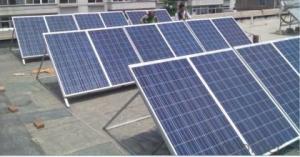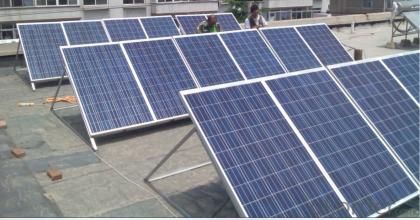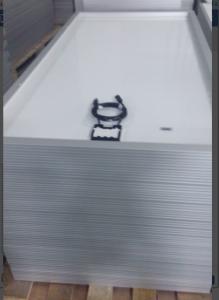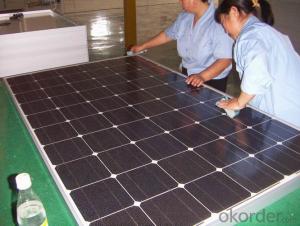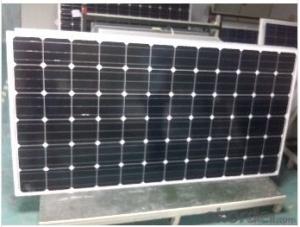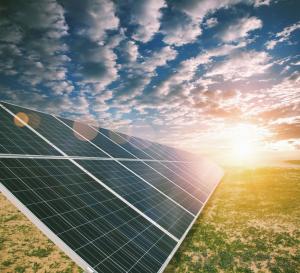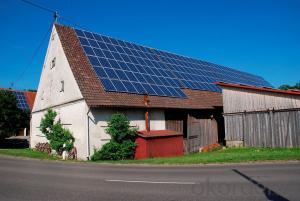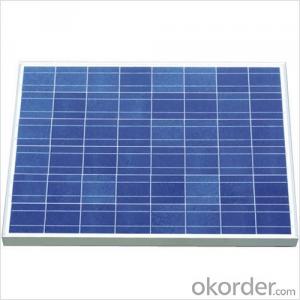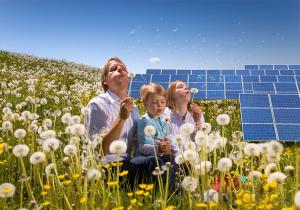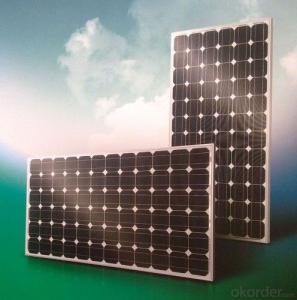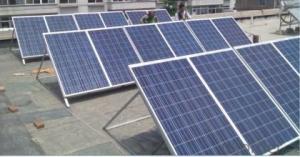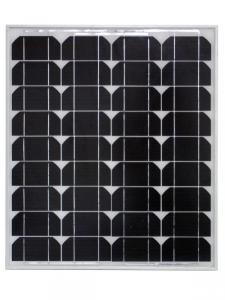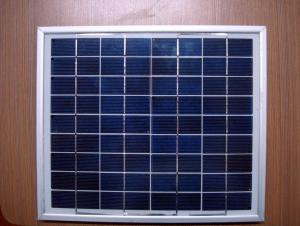Pge Solar Panels - Silicon Polycrystalline Solar Panel 310Wp
- Loading Port:
- Shanghai
- Payment Terms:
- TT OR LC
- Min Order Qty:
- 180000 watt
- Supply Capability:
- 10000000 watt/month
OKorder Service Pledge
OKorder Financial Service
You Might Also Like
Specification
Solar cell module production process
In the face of the problems of global warming and natural resource depletion,solar energy has become the most important solution for our future. CNBM SOLAR takes this unavoidable responsibility to protect our environment by expanding our supply for solar products aggressively in the future. In addition to CNBM SOLAR, we devote to explore our business in Jiangyin, China. Currently, we have capacity of 700 MW in Jiangyin plant is set to be 60MW in the first stage. The combined capacity will be 1GW. The all-pervading application of solar products will definitely bring us a cleaner living environment.
FAQ:
1. How long will my inquiry get response?
Your inquiry related to our products or prices will be replied within 24 hours.
2. Can I get professional service and suggestion?
Well-trained and experienced staffs to answer all your questions in fluent English.
3. Do you accept OEM or customized design?
OEM & ODM, any your customized lightings we can help you to design and put into product.
4. What if I need specific design?
Distributorship are offered for your unique design and some our current models.
About us
We are a high-tech group wich specializes in solar products design,research, manufacture, sales,solar projects design and installation.
Our national sales service covers seven parts, including northeast, north, east, middle, south, northwest and southwest, international sales covers five continents and over forty countries, including Germany, Italy, Spain, France, America and Brazil etc.
We now provide Polycrystalline Silicon Solar Module;Thin Film Solar Module;Monocrystalline Silicon Solar Module Feature of our product
High conversion efficiency mono/poly-crystalline amorphous silicon solar cells
Modules incorporate high performance bypass diodes to minimize the power drop caused by shading
High transmittance, low-iron tempered glass
High performance EVA resin to prevent destroying and water.
AI frame: without screw, corner connection. 8 holes on the frame can be installed easily
Good performance of preventing from atrocious weather such as wind and hails
Certifications: CE IEC TUV VDE, Class I
10 years 90% output warranty
25 years 80% output warranty
Depends on various demands from different customers, CNBM could supply any kinds of service to meet you, please feel free to contact us at any time.
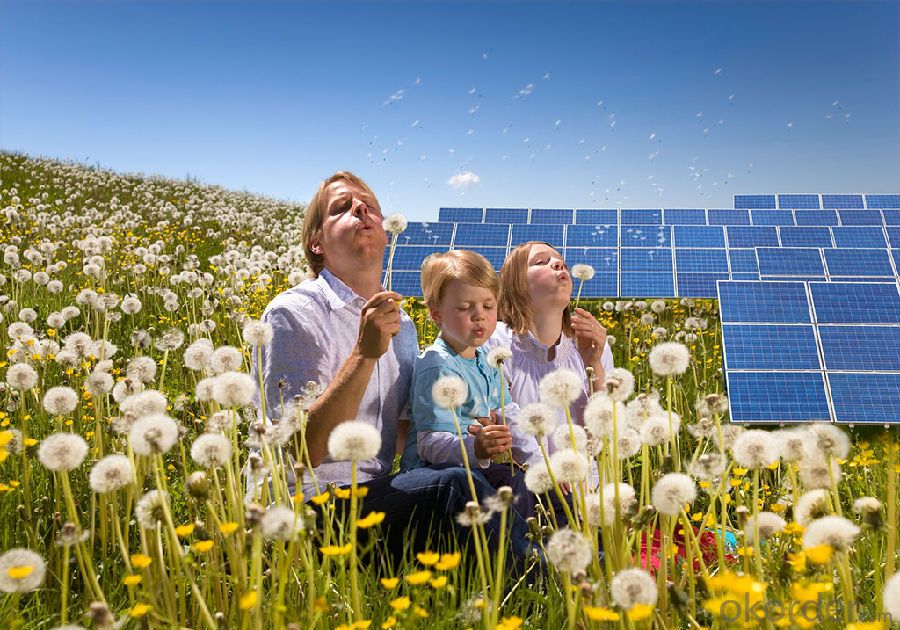
With the company crossing the threshold of 1 GW installations in 2013 and with 700 MW installed in 2014 alone, the photovoltaic modules from CNBM SOLAR are successfully used by satisfied customers in a large number of projects all around the world – from small residential systems up to utility scale systems. On this page you will find a selection of projects in the residential, industrial / commercial and utility segments featuring CNBM SOLAR high quality mono- and polycrystalline solar modules, deployed in different countries worldwide.
- Q: Can solar panels be used to power a public transportation system?
- Yes, solar panels can be used to power a public transportation system. Solar energy can be harnessed through photovoltaic panels and converted into electricity to power electric buses, trams, or trains. This renewable energy source can significantly reduce carbon emissions and dependence on fossil fuels in public transportation, making it a more sustainable and environmentally friendly option.
- Q: Can solar panels be used in combination with wind turbines?
- Yes, solar panels can be used in combination with wind turbines. This combination of renewable energy sources allows for a more reliable and consistent power generation, as wind and sunlight are complementary in nature. By integrating solar panels and wind turbines, the system can generate electricity during both day and night, as well as in varying weather conditions, maximizing energy output and increasing overall efficiency.
- Q: How do solar panel power systems work?
- Solar panel power system contains off-grid and on-grid types, for off-grid type: the panels convert solar energy into electric power and the power will be stored in batteries through controller at daytime, when the loads need power, the battery will charge them through controller; the on-grid system is almost the same, but without battery, it will connect with city grid.
- Q: Can solar panels be installed in urban areas with limited space?
- Yes, solar panels can be installed in urban areas with limited space. There are various innovative solutions available, such as rooftop solar panels, vertical solar panels, and solar panels integrated into building facades. These options allow urban areas with limited space to harness solar energy efficiently and contribute to a more sustainable future.
- Q: If you were to shine, for example, heat lamps onto the solar panel along with the sun, will the solar panel eventually not work? Or will they produce more light as long as more light is directed onto them.
- Solar panels do not wear out the way machinery does. The semiconductors used give up electrons by receiving photons, and do not experience a net deficit of particles. However, if you placed a heat source such as a heat lamp too close to a solar panel, you could damage the panel by overheating it, which would denature the semiconductors or cause damage by scorching or melting. The problem would be the heat, not the light. Solar panels do have a finite life expectancy, though it is several decades under normal circumstances. The panels will eventually become scratched, warped, and dented. The electrical conductors will eventually be broken by metal fatigue as the panels heat and cool on a daily basis. So they will die of old age, but they don't wear out in an electrochemical sense.
- Q: Can solar panels be used off-grid?
- Yes, solar panels can be used off-grid. Off-grid solar systems are designed to generate electricity independently from the utility grid. These systems can store excess energy in batteries for use during times when the sun is not shining or when power is needed at night. Off-grid solar panels are commonly used in remote locations, such as cabins, RVs, boats, and even in developing countries without access to reliable grid electricity.
- Q: Can solar panels be used in areas with high pollution?
- Yes, solar panels can be used in areas with high pollution. While pollution can reduce the efficiency of solar panels to some extent, they can still generate electricity in such areas. Regular cleaning and maintenance of the panels can help mitigate the impact of pollution and ensure their optimal performance. Additionally, the use of advanced technologies and materials in solar panel production can further enhance their resilience to pollution.
- Q: hi so im doing a school project thing and they have a lot of different questions for us that help us decide whether we would rather a city have a nuclear reactor, or solar panel. But i cant seem to get the last 2 questions...help please???so question ........What types of emissions, if any, are produced by each type of generating station? Do these emissions affect human health?question 2.....What are the long term financial costs associated with maintaining each type of generating station?thanks!
- There's no standard nuclear reactor, but if we take a GW nuclear plant, it can generate about 8 terawatt-hours/year. A 200 watt solar panel can generate about kilowatt- hour/day, or 365 kwh/year, so that's about 2 million 200 watt solar panels. However, the power output from the nuclear plant is controllable by the operators, where solar panels only operate at full output for a few hours/day (on clear days - less if there's cloud). Therefore, to compare the two, you have to factor in some kind of energy storage or backup which will increase the cost of the solar installation (perhaps by a factor of two or more). Despite claims of solar being cheaper than coal now, when one compares apples to apples (i. e. total energy produced, and controllability) solar is still several times more expensive than coal, and about twice as expensive as nuclear even in the U. S. A gram of U-235 can make usable energy equal to three metric tons of coal. Solar energy production has no hazardous by-products, but manufacture of the panels can involve some very hazardous materials like fluorine (for silicon panels) or cadmium (for CdTe panels). This is part of the reason panel manufacture has gone to Asia - they have fewer environmental regulations and it's easier to dispose of the byproducts of production. DK
- Q: We have LED at the output of 40 watts and is used for 0 hours giving us 400 Watts-hr of energy consumed.Rechargable batteries needed are 2 V. 400/2 gives us 34 Ampere-hour battery needed. If we want it for 3 days, It would be 34x3=00 Ah. So the battery needed 00 AhNow how do I select the solar panel which can charge this/these batteries? What should be its rating?
- Be aware that you cannot discharge the full capacity of a lead-acid battery without destroying the battery. With a normal battery of this type, you would only want to discharge about 20%, so you would need a 70 AH battery bank. For the 3-day requirement, 500 AH. This is still within reason. If you didn't have the 3-day requirement, you might consider going with NiMH batteries. Back to the 500 AH bank, you would usually charge at at least 5% C, or 25 amps. At the 5 volts that you need for charging, this is 375 watts. Possibly you could go as low as 200 watts.
- Q: Can solar panels be installed on museums or cultural centers?
- Yes, solar panels can be installed on museums or cultural centers. In fact, many museums and cultural centers are adopting solar energy systems to reduce their carbon footprint and save on electricity costs. Solar panels can be installed on rooftops, parking lots, or even as shade structures, providing clean and renewable energy for the facility's operations.
Send your message to us
Pge Solar Panels - Silicon Polycrystalline Solar Panel 310Wp
- Loading Port:
- Shanghai
- Payment Terms:
- TT OR LC
- Min Order Qty:
- 180000 watt
- Supply Capability:
- 10000000 watt/month
OKorder Service Pledge
OKorder Financial Service
Similar products
Hot products
Hot Searches
